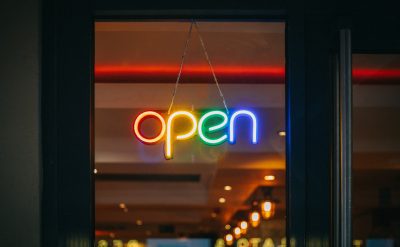Photo by Ajeet Mestry on Unsplash
Opinion: The ‘existential threat’ facing New York public media
The case for taxing streaming services to reinvest in community media in the borough and beyond
Have you ever seen a powerful documentary or thought-provoking interview on public access television? It may have been created by your neighbor, a local artist, or student who found their voice at a community media center.
Community media represents the democratization of our access to and creation of media. It is independent media created by, for, and with local communities who may historically lack access to costly media production facilities.
Unfortunately, public access centers across the country are facing a funding crisis. Right now, community media centers are supported by fees received from agreements with cable providers. But with the rise in streaming, cable subscriptions are in steep decline — in 2023, CNN and Fox News both saw a year-over-year average audience decline of 20 percent. Lifetime’s average audience fell 25 percent, A&E by 15 percent, FX by 16 percent, and so on.
As a result, the ability of community media centers to provide free media education, production tools, and airtime to community members is increasingly threatened. This means fewer platforms for local stories and diverse perspectives.
Every borough throughout New York City has a public access television network and we are all facing a collective existential threat to our existence.
In response to this threat, media centers across the country are urging their legislators to take action and help create new funding pipelines for public access. Here in New York, we’ve been advocating for the Community Media Reinvestment Act, legislation that would ensure community media stays right where it belongs, in the hearts and homes of the people.
Bill S2581A in the New York State Senate and A05900A in the New York State Assembly, would make streaming services like Netflix, Hulu, and Amazon pay their fair share for the public land that houses their infrastructure. This fund would support local media producers and media organizations like BRIC Arts & Media, BronxNet, Manhattan Neighborhood Network, Queens Public Television, and Community Media of Staten Island, and generate between $250 million to $500 million for the people of New York.
In an age where people are choosing streaming providers over cable subscriptions, the emergence of the Community Media Reinvestment Fund is a critical lifeline for the future of media. Major players must do their part. The survival of public programming and localized storytelling depends on it.
Technology moves faster than our laws. We all know large corporations often find ways to skirt accountability where others do not. And the arts and education usually take the first hit. The people — the creators, the artists and those behind the scenes — are left behind in this process.
Community media centers have played a vital role in empowering ordinary individuals by providing access to television studios, equipment and training for several decades. It was through access to channels on Brooklyn Cable Access Television (BCAT) — now known as Brooklyn Free Speech — that programs like “Black Men Screaming” gave voice to community producers like Maurice Carver to discuss political and social issues alongside the likes of Marc Lamont Hill.
Before hip-hop was accepted by the mainstream and platforms like TikTok and Instagram broke down barriers between creators and fans, artists like Biggie Smalls and Jay-Z turned to public access shows to share their talent and connect with local viewers to build their popularity. With the tools and skills provided by media centers, along with access to channel time, community media has evolved into the modern-day town square serving thousands of community producers in access centers across the city every year — a space for expression, activism, and the free exchange of ideas within local communities in New York.
Power cannot solely be in the hands of corporate conglomerates. Without centralized organizations helping to create community media, we are left only with social media and the well-documented volatility of its algorithms and the extremes they foster as public forums for media consumption. Community media protects as much as it serves, giving people the proper training to maximize their voices and control their message.
You might also like 


























